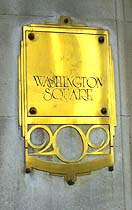| Revitalization Strategies | Functional Strategies |
|---|

Real estate is almost completely dependent on local conditions. One should invest in real estate only if he or she knows the local situation well--including the local economy, market conditions, political environment, building controls, etc. All of these factors can be critical to the success or failure of an investment.
Why invest in real estate? Does it provide as much as could be expected from other types of investments, such as the stock market or mutual funds? If so, is the return high enough to be worth the extra risk involved and the fact that the money may be tied up for an extended period of time? What are the local market conditions, and how are they likely to change over the course of two, five or ten years? It is certainly easier, and in many ways safer, to rely instead on other types of investments. For instance, investing in mutual funds requires little work, is easy to understand, and historically has provided a very reasonable return.
There is one primary reason for investing it real estate--in a word, profit! Owning real estate can often lead to returns that are double those of more conservative strategies. This is based on the fact that in real estate there are three ways to make a return on the initial investment. Added together, these three types of Return on Investment (ROI) can add up to a significant total return--one that justifies the greater risk and involvement. This is what makes the risk and bother worth it.
Three types of return of investment (ROI) are found with real estate. They are Cash Flow, Return on Taxes, and Appreciation.
ROI #1: Before Tax Cash Flow
Cash Flow is the amount returned to an investor annually as cash. It represents the most direct type of return, since it is money one can "put in his pocket" right away, and as a result is most desirable.However, the amount returned as cash may not be that significant, and by itself would not justify the investment. Cash flow typically will be lowest in the early years of a project, and may initially even be negative, meaning additional cash will need to be put into the project over the short term. Cash flow hopefully will stabilize after a number of years, but often still will be the least of the three ROIs.
ROI #2: Return on Taxes
Many investors, especially those in higher tax brackets, are less concerned with cash return than they are with the tax advantages of real estate investment. For them, real estate provides some of the best tax opportunities available.In addition, the rehabilitation costs of a historic building can be partially recovered through a special program of Rehab Investment Tax Credits.
ROI #3: Appreciation
The greatest Return on Investment is typically from appreciation, which is the continuing increase in the value of a property due to higher marker values each year. Properties can have significant increases in value over time due simply to such market forces. The assumption of property appreciation may initially seem contradictory, for tax law assumes a decrease in the value of property over time. But such depreciation is a theoretical assumption, while true market instead shows increases over time.The relatively high ROI due to appreciation represents one of the primary reasons for investing in real estate. However, this return is realized only on the sale of the property, and is dependent on an investor being able to tie up his or her money for an extended period of time. Real estate investing is not for those who need a regular, predictable return on their investment. But it can be very rewarding for those who can invest relatively large amounts and wait for favorable market conditions.
| Continue with Real Estate App |
|---|
| Revitalization Strategies | Functional Strategies |
|---|
| Financial Incentives | Decision to invest in real estate |
|---|
| ProForma Analysis | Real Estate Investment Case Study |
|---|
| Physical Improvement Strategies | Case Study Cities |
|---|
